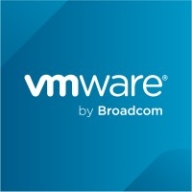

VMware vSAN and Dell VxFlex Ready Nodes compete in the hyper-converged infrastructure market. VMware vSAN has an edge in seamless integration with existing VMware environments, while Dell VxFlex stands out in scalability and flexibility.
Features: VMware vSAN is known for its tight integration with VMware tools, streamlined management capabilities, and cost efficiency within VMware environments. Dell VxFlex Ready Nodes offer robust performance, scalability, and flexible configurations, making them suitable for diverse workloads and large-scale environments.
Ease of Deployment and Customer Service: VMware vSAN provides straightforward deployment for those with existing VMware systems and is supported by comprehensive customer service. Dell VxFlex Ready Nodes deliver flexible deployment options and strong customer support but require more hands-on setup and offer greater customization for different infrastructure needs.
Pricing and ROI: VMware vSAN is cost-effective for scaling within VMware setups, with low setup costs and positive ROI for existing VMware users. Dell VxFlex Ready Nodes have higher initial setup costs compensated by long-term returns due to flexible hardware options and high-performance capabilities. VMware vSAN's pricing is competitive in its ecosystem, while Dell VxFlex offers value for those emphasizing performance and scalability.
| Product | Market Share (%) |
|---|---|
| VMware vSAN | 13.9% |
| Dell VxFlex Ready Nodes | 0.6% |
| Other | 85.5% |


| Company Size | Count |
|---|---|
| Small Business | 98 |
| Midsize Enterprise | 58 |
| Large Enterprise | 128 |
VxRack FLEX and VxFlex Ready Nodes, also known as the Flex family, create a server-based SAN by combining virtualization software, known as VxFlex OS, with Dell EMC PowerEdge servers to deliver flexibility, scalability, and capacity on demand. Local storage resources are combined to create a virtual pool of block storage with varying performance tiers. The platform enables you to start small (with as little as four nodes) and scale incrementally. The Flex family provides enterprise-grade data protection, multi-tenant capabilities, and add-on enterprise features such as QoS, thin provisioning, and snapshots. VxFlex OS is the key enabler and provides an unmatched combination of performance, resiliency and flexibility to address enterprise data center needs. The unique features of VxFlex OS make it an excellent complement to Kubernetes for stateful applications, such as databases, continuous integration, logging and monitoring platforms.
VMware vSAN is a software-defined storage product that is used in collaboration with VMware ESXi hypervisor and that provisions and manages storage based on policies, regardless of the underlying hardware. The solution enables you to prime your business for growth through its seamless evolution (it is integrated with vSphere and requires no new tools), its flexibility, and its multi-cloud capabilities. As an industry-leading software, VMware vSAN provides high levels of performance with minimal impact on CPU and memory.
VMware vSAN Features
VMware vSAN has many valuable key features. Some of the most useful ones include:
VMware vSAN Benefits
There are many benefits to implementing VMware vSAN. Some of the biggest advantages the solution offers include:
Reviews from Real Users
Below are some reviews and helpful feedback written by PeerSpot users currently using the VMware vSAN solution.
PeerSpot user Yves S., CEO, Cloud Evangelist at Comdivision Consulting GmbH, says, “vSAN gives us a lot of advantages when we need to expand resources. We have an overall larger host infrastructure, and we split that up for specific customer test and use cases. In that specific scenario, we can easily add more hosts or reduce the number of hosts in the environment.”
A reviewer who works in Infrastructure Security explains, “The ease of use is great. The initial setup and upgrade process was pretty straightforward. And, technical support is great.”
Laurent N., Director at Softlogic, comments, "The feature that I have found most valuable is that it is easy to deploy. It is easy to create and delete virtual servers. It is easy to create the load balancing and the clustering."
We monitor all HCI reviews to prevent fraudulent reviews and keep review quality high. We do not post reviews by company employees or direct competitors. We validate each review for authenticity via cross-reference with LinkedIn, and personal follow-up with the reviewer when necessary.